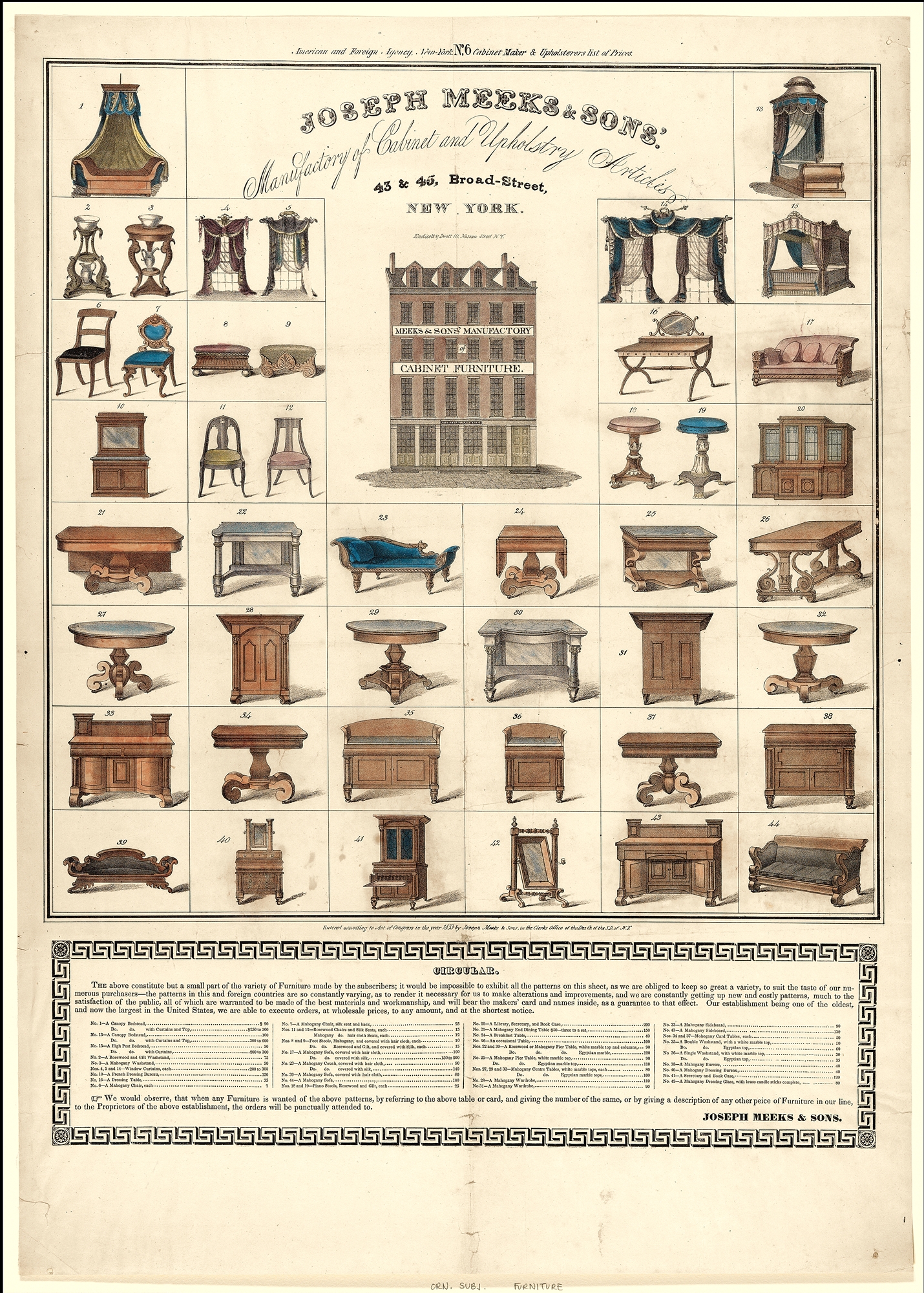Joseph Meeks
In 1797, Joseph Meeks began his career in furniture manufacturing. He opened Joseph Meeks & Sons in New York, where he designed and made cabinets. The business became very successful, allowing for an expansion to New Orleans in 1820. Shortly afterwards, Meeks began making chairs in addition to the cabinets. The company produced furniture in a variety of styles, including Rococo Revival and Gothic Revival.
Joseph Meeks & Sons published a color lithograph broadside in 1833 to advertise its furniture, one of the first of its kind. The broadside was so successful that the business became the top American furniture company following its publishing.

Broadside by Joseph Meeks & Sons from the Metropolitan Museum of Art
In 1845, Joseph Meeks got the opportunity to help furnish the White House as First Lady Sarah Polk was redecorating the Red Room. Meeks made a variety of rosewood chairs and couches for this project, all in the Rococo style and upholstered in crimson.
The company passed down through two Meeks generations, and changed its name to J. & J.W. Meeks following Joseph’s retirement. Following a decline in business, the New Orleans warehouse closed in 1839, with the company itself to follow in 1869.
John Henry Belter
John Henry Belter was born in Germany in 1804, studied there as a cabinetmaker’s apprentice, then moved to New York City at the age of 29 to pursue a career in furniture making. After arriving, he opened a store on Broadway where he worked mostly with rosewood, walnut, and mahogany for his pieces.

Patent No. 19,405: “Improvement in the method of manufacturing furniture” from the U.S. patent and trademark office
Belter received various patents during his life, including one in 1856 for his method of processing laminated rosewood. It involved gluing thin layers of wood together to form panels, heating those with steam, then shaping them onto molds. This technique allowed the wood to remain thin yet strong when being curved.
In 1885, Belter opened a large furniture factory in New York City. He employed a large number of apprentices, and he became known for the key elements of his style: detailed carvings, brocade-work, and asymmetrical designs. The furniture would be shaped with mass production forms, and then would be decorated with hand-carved ornaments. Belter’s company did not keep records or leave maker’s marks on pieces, making it difficult to identify his furniture in the future.
Belter died in 1863, yet his company attempted to continue on. Widespread financial struggles following the end of the Civil War made that endeavor difficult. The business finally ended up declaring bankruptcy and closing in 1867.